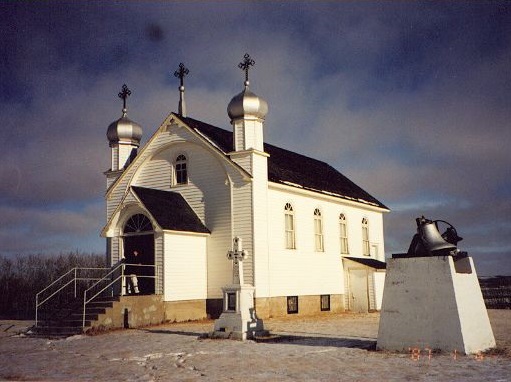
Amid the boundless Canadian prairies, among fields and gentle hills, lies a small settlement with a great soul — Sokal. Its name is familiar to anyone who grew up in Lviv region, for it was from the Ukrainian Sokal that the story of this community began — a story that preserved its native language, faith, and memory of home across the ocean.
The Beginnings of the Ukrainian Settlement in Saskatchewan
At the dawn of the 20th century, Canada opened its doors to thousands of emigrants from Halychyna, Bukovyna, and Volhynia. Many sought free land, a better future, and a safe home for their children. They arrived with wooden suitcases but with steadfast faith in hard work. Around 1901, in the northern part of Saskatchewan, a small settlement emerged. Ukrainian settlers named it Sokal, in honour of their hometown on the River Buh in Halychyna.
The First Settlers and the Post Office
Most of the settlers came from Sokal County — from villages and towns located between Lviv and the Polish border. Among them were families named Koval, Hnatyuk, Melnyk, and Krushelnytsky — ordinary people skilled in farming and community life. They settled near the town of Wakaw, building homes, schools, and a wooden church.
From historical sources we know:
The area between Rosthern and Wakaw in central Saskatchewan began to be settled in the early 1900s. Most of the first settlers came from Ukraine or Russia.
A post office was opened about 12 miles northwest of Wakaw in 1912, in the home of Phillip Manczur.
It was named Sokal after a town in the Russian Empire (most likely the Ukrainian Sokal), the homeland of some of the early settlers.
The post office operated for more than 40 years and was closed on 31 August 1956.
These facts show that the community was well established, with its own post, school, and church — the cornerstones of Ukrainian life on the prairie.
Holy Trinity Church — The Heart of the Community
In 1904, the settlers built their first church — the Holy Trinity Ukrainian Catholic Church. It was a simple wooden structure, yet it became a spiritual centre where baptisms, weddings, and celebrations were held, and the same hymns were sung as in Sokal, Ukraine.
In 1939, the church was destroyed by fire, but the community did not give up. By 1943, the residents had built a new church with their own hands, which still stands today. This new church replaced the old one and became a symbol of enduring faith. It was solemnly consecrated on 31 August 1952 and remains known for its beauty and historical value in the region.
Life of the Community on the Canadian Prairies
The settlement of Sokal was small but close-knit. People helped one another during harvests, celebrated Christmas, Easter, and Green Holidays together. Children attended Sunday school, where they learned Ukrainian songs and prayers. The cemetery beside the church still bears tombstones inscribed in Ukrainian — proof of love for their native tongue even far from home.
Although today Sokal is officially just a locality — a small place on the map of Canada (coordinates 52.70007° N, 105.90111° W) — for the descendants of those settlers, it remains part of their family memory.
A Name that Preserved the Memory of Sokal
The official website of the Eparchy of Saskatchewan notes:
“The name ‘Sokal’ originates from Halychyna and refers to a county city along the River Buh found north of Lviv.”
Thus, the settlement’s name comes directly from Halychyna — from our Sokal, the town on the River Buh. Through this name, Ukrainians preserved a link to the land of their ancestors even in Canada.
Sokal Today
Today, only the church, the old cemetery, and the memories remain in Sokal. Yet every summer, descendants of the first settlers return here from Prince Albert, Saskatoon, and Regina. They tend graves, light candles, and remember those who left their homeland to build a new life in a foreign land.
Thus, the thread of memory continues — from Sokal on the River Buh to Sokal among the Canadian fields. And this thread lives on, woven by generations of Ukrainians for whom the word home sounds equally warm in both Ukraine and Canada.
Interesting Facts about Sokal (Saskatchewan)
📮 Sokal Post Office operated from 1912 to 1956. Its first postmaster was Phillip Manczur, in whose home the post office was originally opened.
🕍 The first Holy Trinity Church (1904) was hand-built from local timber. After the 1939 fire, the community rebuilt it in 1943 entirely on their own.
🧭 Location: roughly 12 miles (19 km) northwest of the town of Wakaw, between the Rosthern and Prince Albert districts.
🇺🇦 Origin of the name: the settlement was named after the Ukrainian town of Sokal (Lviv region), home to many of the original settlers.
🌾 Cultural heritage: in the 1950s, the community hosted annual summer gatherings known as “Ukrainian Picnics,” featuring live music, the song Reve ta stohne Dnipr shyrokyi, and the hopak dance performed proudly on Canadian soil.

